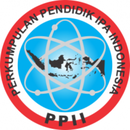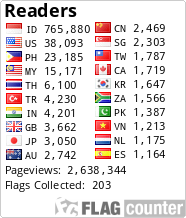The effect of virtual instrument system laboratory to enhance technological literacy and problem-solving skills among junior high school students
DOI:
https://doi.org/10.21831/jser.v5i2.44290Keywords:
one or more important, specific, or representative word(s) or phrase(s)Abstract
This study aims at analyzing the effect of the Virtual Instrument System Laboratory (Vis-Lab) to enhance technological literacy and problem-solving skills among junior high school students. This type of research can be categorized as Quasi-experimental research with Nonequivalent Control Group Design. The subjects of this study were the seventh-grade students in one of the junior high schools in Sleman Regency, Yogyakarta. The research instrument consisted of pretest and posttest on technological literacy and problem-solving skills. The data analysis technique used N-Gain analysis, prerequisite test, hypothesis testing with MANOVA, and effect size. Based on the MANOVA test, the Sig. value of 0,000 less than α (0.05) indicated that there was a gap in the students' technological literacy and problem-solving skills between the control and the experimental class. The use of VIS-Lab learning media enhanced the ability of technological literacy by 9.0% for the experimental class and 2.1% for the control class respectively. Meanwhile, the effective contribution to the use of VIS-Lab learning media was 36.5% for the experimental class and 4.73% for the control class. It means that the use of VIS-Lab learning media contribute effectively to improving the ability of technological literacy and problem-solving.
Downloads
References
Ahmed, M. E., & Hasegawa, S. (2014). An Instructional Design Model and Criteria for Designing and Developing Online Virtual Labs, 4(3), 355–371.
Bautista, N.U. & Boone, W.J. (2015). Exploring the Impact of TeachMEâ„¢ Lab Virtual Classroom Teaching Simulation on Early Childhood Education Majors' Self-Efficacy Beliefs. Journal of Science Teacher Education, 26(3), 237-262. Retrieved July 18, 2020 from https://www.learntechlib.org/p/160005/.
Chan, C ( 2009). Evaluating learning experiences in virtual laboratory training through student perceptions: acase study in Electrical and Electronic Engineering at the University of Hong Kong. Journal of the Higher Education Academy Engineering (2):10.
Chi, M. T. H., & Glaser, R. (1985). Problem solving ability. In R. J. Sternberg (Ed.), Human abilities: An information-processing approach (pp. 227-257). San Francisco, CA: W. H. Freeman & Co.
Dyrberg, N. R., Treusch, A. H., & Wiegand, C. (2017). Virtual laboratories in science education: Students' motivation and experiences in two tertiary biology courses. Journal of Biological Education, 51(4), 358-374.
Erstad, O. (2008). Trajectories of remixing – digital literacies, media production and schooling. In C. Lankshear & M. Knobel (Eds.), Digital literacies. Concepts, policies and practices (pp. 177–202). New York, NY: Peter Lang.
Funk, S., Kellner, D., & Share, J. (2016). Critical media literacy as transformative pedagogy. In M.N. Yildiz & J. Keengwe (Eds.), Handbook of research on media literacy in the digital age (pp. 1–30). Hershey, PA: Information Science Research.
(17) (PDF) Toward a Multifaceted Heuristic of Digital Reading to Inform Assessment, Research, Practice, and Policy. Available from: https://www.researchgate.net/publication/339404897_Toward_a_Multifaceted_Heuristic_of_Digital_Reading_to_Inform_Assessment_Research_Practice_and_Policy [accessed Jul 18 2020].
Gilster, P. (1997), Digital literacy. New York: Wiley Computer Publications.
Foshay & Kirkley. 2003 . Problem Solving.www.indiana-edu/m
Domingues, L., I., Rocha, F., Dourado, M., Alves, & E.C., Ferreira (2010). Virtual laboratorios in (bio) chemical engineering education. Journal Education for Chemical Engineers. 5(10), 21-27.
Hawkins, I. & Phelps, A. J. 2013. Virtual laboratory vs. traditional laboratory: which is more effective for teaching electrochemistry? Chemistry Education Research and Practice, 14, 516–523. DOI: 10.1039/c3rp00070b.
Herga, N. R., ÄŒagran, B., & Dinevski, D. (2016). Virtual Laboratory in the Role of Dynamic Visualisation for Better Understanding of Chemistry in Primary School. Eurasia Journal of Mathematics, Science & Technology Education, 12(3), 593-608.
Huang, C. 2004. Virtual labs: E-learning for tomorrow. PLoS Biology, 2(6), 734–735. DOI: 10.1371/journal.pbio.0020157.
Jagodzinsky, P. & Wolski, R. 2015. Assesment of application technology of natural user interfaces in the creation of a virtual chemical laboratory. Journal Science Education and Technology, 24(1), 16–28. DOI: 10.1007/s10956-014-9517-5.
Jian, C.L. Du, A.H. Lee, C.W. Binns. (2005). Do dietary lycopene and other carotenoids protect against prostate cancer? Intertational Journal Cancer, 113 (6) (2005), pp. 1010-1014
Jiménez, P.M., Pedrajas, A.P., Polo, J., & Bellido, M.S.C. 2003. Learning in chemistry with virtual laboratories. Journal of Chemical Education, 80(3), 346–352. DOI: 10.1021/ed080p346.
Jong, Ton de., et al. 2013. Physical and virtual laboratories in science and engineering education. American Assocation for the Advancement of Science, 340(6130), 305–308. DOI: 10.1126/science.1230579
Martin, A. (2006) "Literacies for age Digital Age" dalam Martin&D. Madigan (eds)Digital Literacies for Learning. London. Facet.
Martinez-Jimenez, P., Pontes-Pedrajas, A., Polo, J. & Climent-Bellido, M.S. (2003). Learning in Chemistry with Virtual Laboratories. Journal of Chemical Education, 80(3), 346. Retrieved July 18, 2020 from https://www.learntechlib.org/p/95042/
McGarr, Oliver. (2020) The use of virtual simulations in teacher education to develop pre-service teachers' behaviour and classroom management skills: implications for reflective practice, Journal of Education for Teaching, 46:2, 159-169, DOI: 10.1080/02607476.2020.1724654
Rice, M., O., David, C., Adrienne, S., Rod, O., Neville, & H., Dale V-Lab: a virtual laboratory for teaching introductory concepts and methods of physical fitness and function. Australian Journal of Educational Technology 15(2).
Tatli, Z. & Ayas, A. 2010. Virtual laboratory applications in chemistry education. Procedia Social and Behavioral Sciences, 9, 938–942. DOI: 10.1016/j.sbspro.2010.12.263.
Winkelmann, K., Keeney-Kennicutt, W., Fowler, D., & Macik, M. (2017). Development, implementation, and assessment of general chemistry lab experiments performed in the virtual world of second life. Journal of Chemical Education, 94(7), 849-858.
Downloads
Published
How to Cite
Issue
Section
License
Journal of Science Education Research allows readers to read, download, copy, distribute, print, search, or link to its articles' full texts and allows readers to use them for any other lawful purpose. The journal allows the author(s) to hold the copyright without restrictions. Finally, the journal allows the author(s) to retain publishing rights without restrictions
- Authors are allowed to archive their submitted article in an open access repository
- Authors are allowed to archive the final published article in an open access repository with an acknowledgment of its initial publication in this journal










